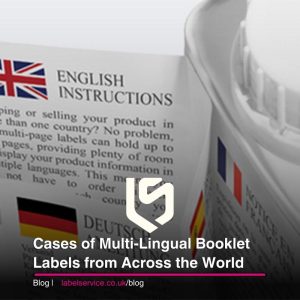When it comes to sustainability, labels matter. One might assume that self-adhesive labels are just a small part of the packaging, but how a package is labelled can really make or break its sustainability.
Firstly, you want to ensure that the label is suitable for sorting the different packaging materials for the right recycling streams. A label shouldn’t, for example, fully cover a bottle so that recycling machines can still recognize the plastic material of the container.
Secondly, a label should be compatible with the plastic package or be removable from it in order to enhance the recycling process and to provide higher quality recycle rates.
Choosing a labelling solution that utilises renewable or recycled raw materials is the most important step you should take to increase sustainability and to reduce the carbon footprint of your packaging. One way to do that is to swap fossil-based plastics to e.g. wood-based ones.
Paying attention to the choice of adhesive is the next step on a road to advance the recyclability of your plastic packaging. The easier the label is to remove, the easier it is to recycle the package. There is an innovative wash-off label adhesive which makes it possible to wash off the label in the PET recycling process. A clean PET flake can then be recycled and reused in manufacturing new PET plastics.
How packages are designed greatly affect their sustainability and circularity. It’s important that we help designers look at their packages from a truly holistic point of view: a sustainable package is an ecosystem of elements – all the way from the cap or seal to the label of a package. It is up to sustainable design how efficiently a package can be recycled in the standard plastic recycling stream.
When it comes to sustainability, labels matter.

















